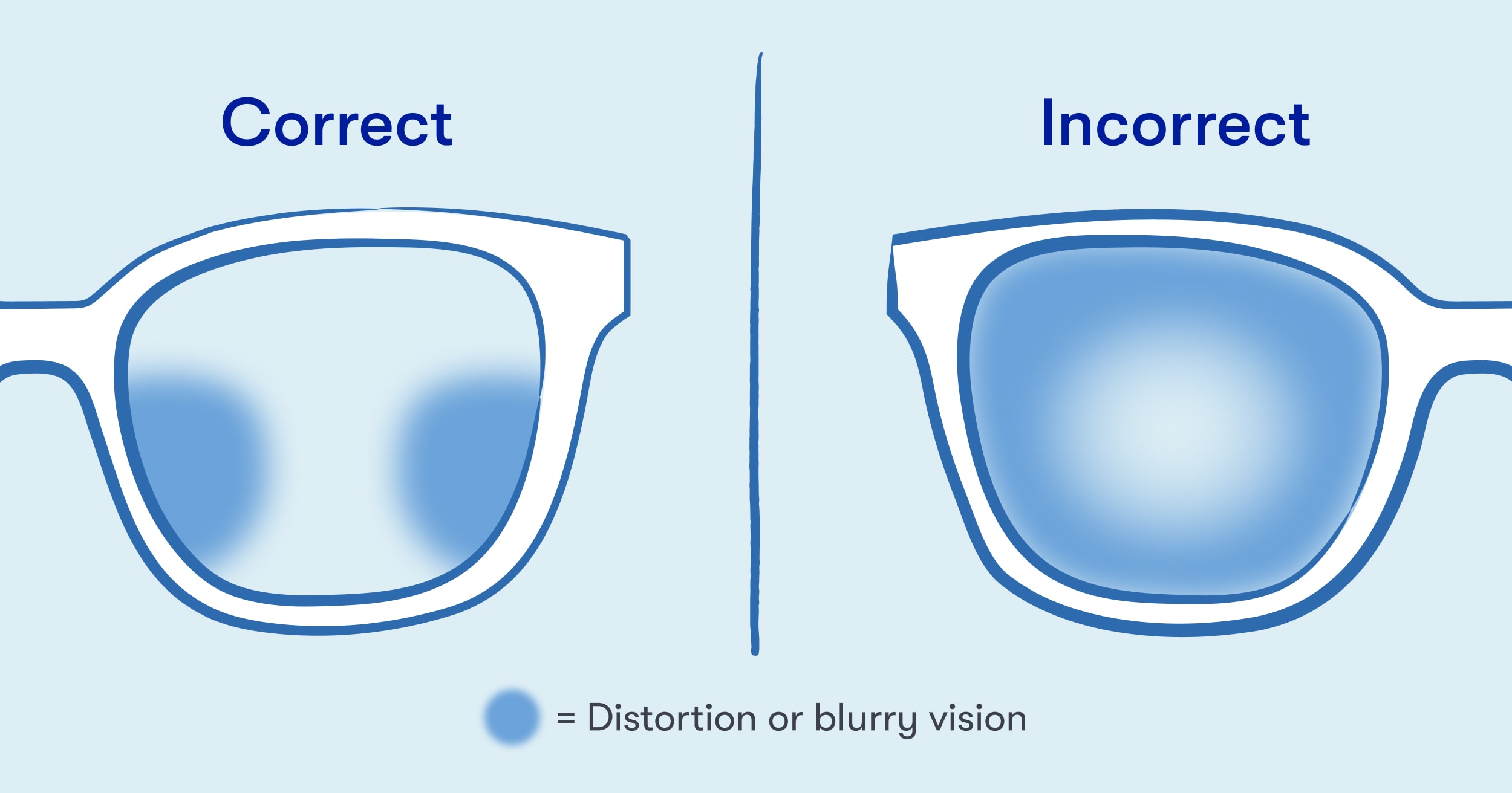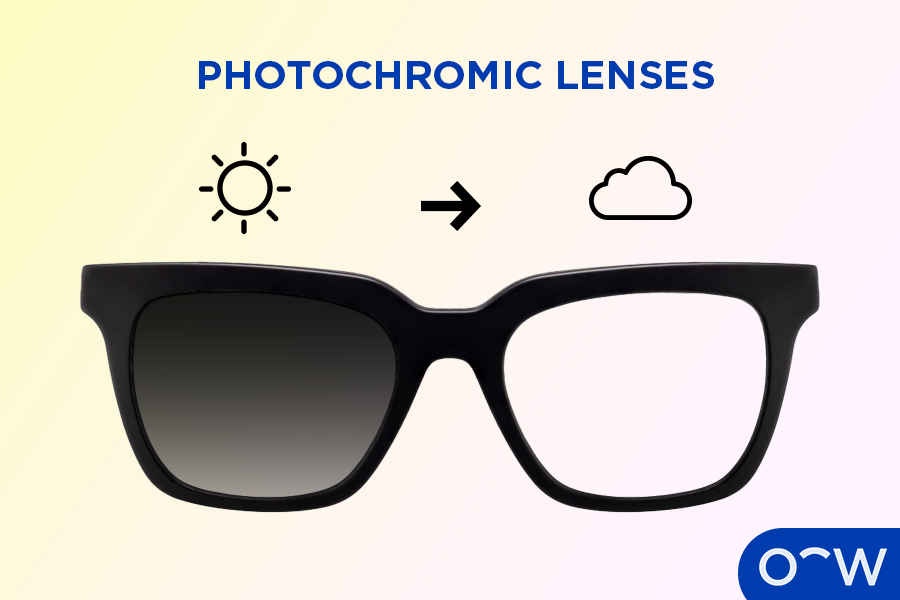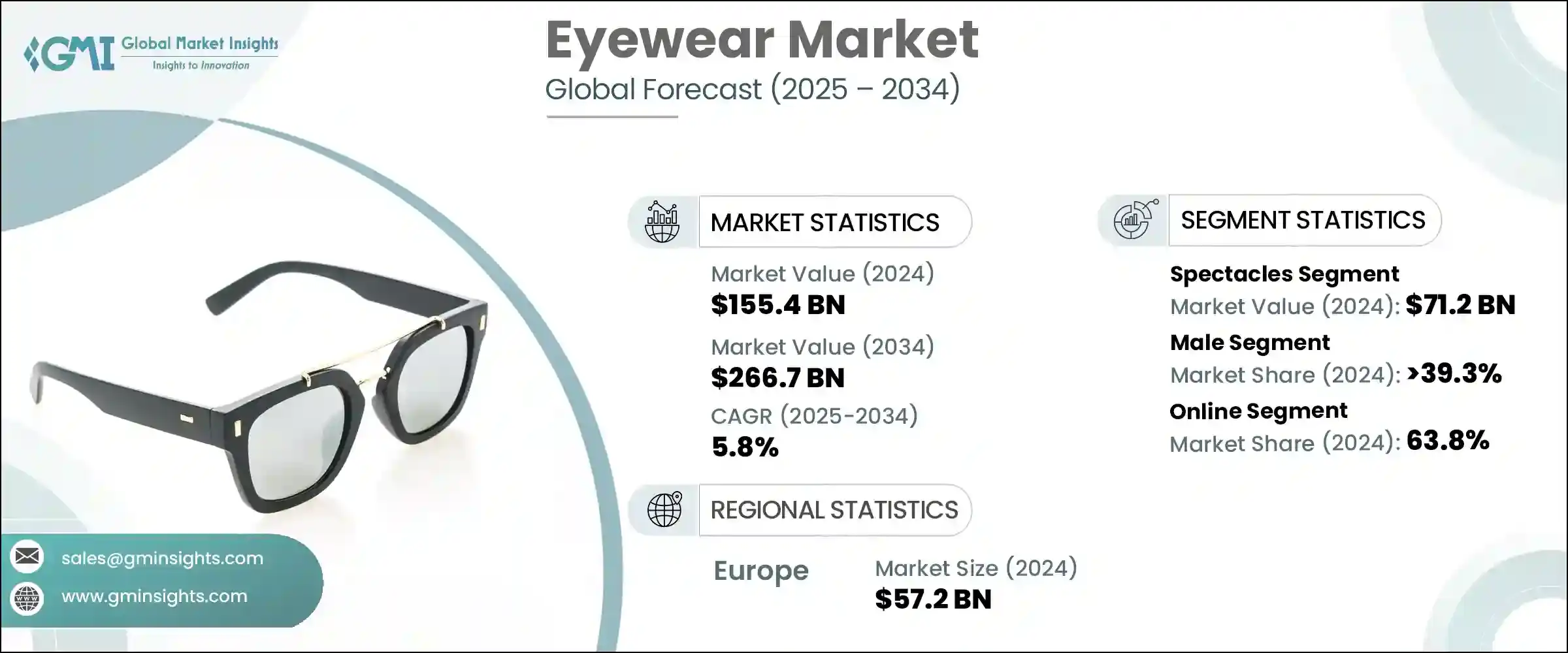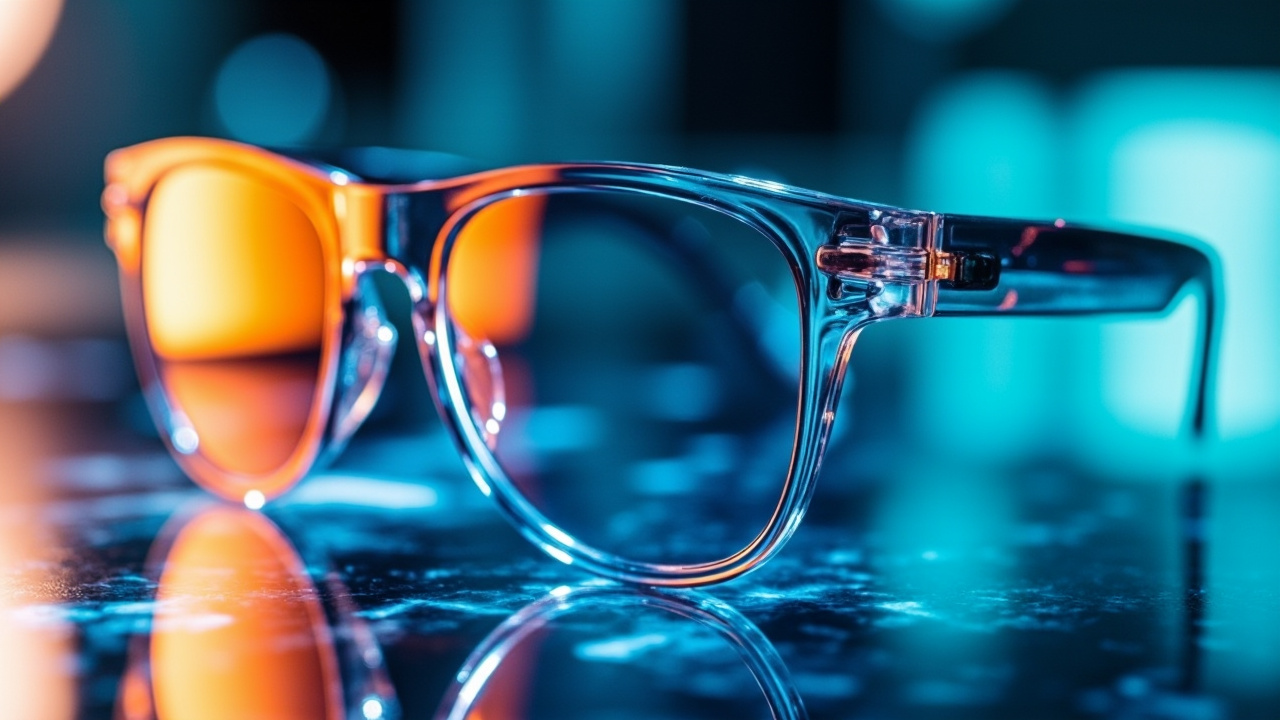Are you maximizing your visual potential in 2025? Understanding the diverse world of eyewear lenses is key to achieving optimal clarity and comfort. This guide helps demystify various lens types, from advanced progressive solutions to practical glasses with readers, providing you with the essential knowledge to select the perfect vision correction for your lifestyle.
Demystifying Eyewear Lens Types for Optimal Vision

Understanding the variety of eyewear lenses available is crucial for anyone seeking clear and comfortable sight. Whether you’re dealing with nearsightedness, farsightedness, or the common challenges of aging eyes, selecting the right type of corrective lens significantly impacts your daily visual experience. This guide will walk you through the fundamental categories and the sophisticated advancements in lens technology.
Understanding Basic Corrective Lens Categories
Navigating the world of vision correction often begins with grasping the foundational types of corrective lenses. These initial categories address specific visual impairments, providing targeted clarity for various needs.
Single Vision Lenses: Simple Solutions for Clear Sight
Single vision lenses are the most common and straightforward type of prescription eyewear lens. As their name suggests, they contain a single optical power throughout the entire lens, designed to correct one specific vision problem. These lenses are ideal for individuals suffering from myopia (nearsightedness), hyperopia (farsightedness), or astigmatism. For instance, a person with myopia would use single vision lenses to see distant objects clearly, while someone with hyperopia would benefit from them for close-up tasks.
Their uniform power makes them easy to adapt to, offering consistent clarity for a particular distance. In 2025, advancements in materials mean these prescription lenses are thinner, lighter, and more durable than ever before, enhancing comfort and aesthetics. If you’re experiencing blurred vision at a specific distance, exploring simple, effective vision correction lenses like these is often the first step. For a wide selection of basic corrective solutions, you can find a suitable pair that aligns with your specific needs by visiting this link: corrective eyewear lenses.
Bifocal and Trifocal Lenses: Traditional Multi-Focal Options
As we age, a common condition called presbyopia often develops, making it difficult to focus on objects at different distances. For decades, bifocal and trifocal lenses have been the go-to solution for this age-related focusing challenge. Bifocal eyewear lenses feature two distinct optical powers within a single lens, separated by a visible line. The larger upper portion corrects distant vision, while a smaller segment at the bottom provides magnification for near tasks, like reading. This dual functionality means wearers no longer need to switch between two different pairs of glasses.
Trifocal optical lenses take this concept a step further by incorporating three distinct power zones, also separated by visible lines. In addition to distance and near correction, a middle segment is included for intermediate vision, typically arm’s length, useful for computer work or viewing dashboard instruments. While highly functional, the noticeable lines on these multi-focal lenses can cause an “image jump” when the eye transitions between zones, which some users find disruptive. Despite this, for many, these traditional corrective eyewear options remain a reliable choice for managing multiple vision needs with one pair of glasses. To explore various traditional multi-focal lens options that provide clear vision for multiple distances, check out this comprehensive range: multi-focal eyewear.
The Sophistication of Progressive Lenses
Stepping beyond traditional multi-focal designs, progressive lenses represent a significant leap in eyewear lens technology. They offer a modern, seamless solution for presbyopia, blending multiple prescriptions into a single, line-free lens.
How Progressive Lenses Work: Seamless Vision Transitions
Progressive eyeglass lenses, often referred to as no-line bifocals, provide a truly seamless visual experience. Unlike bifocals or trifocals with their distinct segments and visible lines, progressive addition lenses (PALs) feature a gradual, invisible progression of power. This means the lens smoothly transitions from distance vision at the top, through an intermediate zone in the middle, to near vision at the bottom. The absence of lines not only offers a more aesthetically pleasing look but also eliminates the “image jump” associated with traditional multi-focals, leading to a more natural and fluid visual flow.
The design of these advanced lenses is highly complex, involving sophisticated optical engineering to ensure a wide, clear field of vision for all distances. Wearers can simply tilt their head slightly to find the optimal power for their current viewing distance, whether they are driving, using a computer, or reading a book. This continuous corridor of vision makes tasks like looking up at a distant sign and then down at a smartphone feel incredibly natural.
However, adapting to progressive vision correction lenses does require some initial adjustment, as the peripheral areas of the lens can have some distortion due to the power progression. It’s a testament to professional eye care that such precise correction is available, underscoring the dangers of attempting to correct vision without proper guidance. Just as it’s unsafe to use colored contacts without a prescription, understanding and choosing the right progressive optical lens requires professional consultation to avoid discomfort and ensure optimal visual performance. To discover a range of progressive lenses designed for seamless vision transitions, which can significantly enhance your daily visual comfort and clarity, consider exploring these cutting-edge options: progressive eyewear lenses.
Progressive vs. Bifocal Lenses: Which Offers Better Adaptation?
Choosing between progressive and bifocal eyewear lenses often comes down to individual preference, lifestyle, and the willingness to adapt. Both aim to correct presbyopia, but their mechanisms and user experiences differ significantly.
Bifocal lenses are generally easier for new users to adapt to because the two distinct power zones are clearly delineated. You simply look through the top for distance and the bottom segment for near. This clear separation can be comforting for some, leading to a faster adaptation period, particularly for those who have used single vision lenses for a long time. However, the visible line and the “image jump” can be a drawback, potentially causing a jarring visual experience when shifting focus.
Progressive lenses, on the other hand, offer superior aesthetics and a more natural visual experience without any lines. The seamless transition of power means no image jump, providing a continuous field of vision for all distances. While this offers incredible convenience, the adaptation period can be longer, typically ranging from a few days to a few weeks. Wearers need to learn to find the “sweet spot” for each viewing distance and become accustomed to the peripheral distortion in the side areas of the lens. Data from optical surveys in 2025 indicates that while initial adaptation can be a hurdle for about 10-15% of new progressive wearers, the vast majority ultimately find them more comfortable and versatile for daily use than traditional bifocals. Ultimately, the “better” choice depends on your comfort with adapting to new visual patterns and your desire for a line-free, aesthetically pleasing solution. For a comprehensive selection of eyewear lenses, including both traditional bifocal and advanced progressive designs, which cater to various adaptation preferences and visual needs, explore the options available here: eyewear lenses.
Innovations in Lens Technologies and Materials

The evolution of eyewear lenses extends far beyond basic vision correction. Modern optical science has introduced a myriad of innovations in lens technologies and materials, revolutionizing clarity, durability, and comfort. These advancements are designed to enhance visual performance and protect eye health in various daily environments, from bright sunlight to digital screens. Understanding these cutting-edge options empowers consumers to choose optical lenses that perfectly suit their lifestyle.
Advanced Coatings: Enhancing Durability and Clarity
Advanced coatings on spectacle lenses are not just superficial additions; they are integral to optimizing visual clarity, comfort, and the longevity of your eyewear. These microscopic layers perform crucial functions, improving the overall performance of your corrective lenses.
Benefits of Anti-Reflective Coating: Minimizing Glare for Enhanced Comfort
Anti-reflective (AR) coating, also known as anti-glare coating, is a vital enhancement for modern eyeglass lenses. This microscopically thin, multi-layered coating eliminates reflections from both the front and back surfaces of the lens. By reducing glare, AR coatings allow more light to pass through the lens, resulting in sharper vision and significantly improved visual comfort, particularly in challenging light conditions. For instance, when driving at night, AR-coated vision correction lenses drastically reduce glare from oncoming headlights and streetlights, making for a safer experience.
Beyond functional benefits, AR coatings also enhance the aesthetic appeal of your eyewear. The absence of distracting reflections means people can see your eyes more clearly, improving eye contact during conversations. In 2025, advanced AR coatings are also designed to be more durable and scratch-resistant, further extending the life of your prescription lenses. This feature is especially beneficial for those who rely on their glasses throughout the day for various activities.
Blue Light Filtering and UV Protection: Shielding Your Eyes from Digital Strain and Harmful Rays
In our increasingly digital world, the importance of protecting our eyes from harmful light sources has never been greater. Blue light filtering and UV protection coatings are two critical innovations in eyewear lens technology addressing these concerns. Blue light filtering coatings are specifically engineered to block or absorb a significant portion of the high-energy visible (HEV) blue light emitted by digital screens, LED lights, and even the sun. Prolonged exposure to blue light can contribute to digital eye strain, fatigue, and disrupt sleep patterns. These specialized lens treatments help alleviate discomfort and protect your eyes during extended screen time.
Simultaneously, UV protection coatings offer comprehensive defense against the sun’s harmful ultraviolet (UV) rays. Just as UV radiation damages skin, it can also contribute to serious eye conditions such as cataracts and macular degeneration over time. By incorporating a UV-blocking layer, eyewear lenses provide essential protection, similar to wearing sunscreen for your eyes. Many high-quality eyeglass lenses in 2025 come standard with 100% UV protection, safeguarding your ocular health from invisible threats. These protective measures ensure your optical lenses do more than just correct vision; they actively preserve your eye health.
Cutting-Edge Lens Materials and Their Advantages
The materials used to manufacture eyewear lenses have undergone significant evolution, moving beyond traditional glass to lightweight, durable, and optically superior plastics. These innovations have dramatically improved comfort, safety, and visual performance for wearers.
Silicone Hydrogel: A Revolution in Contact Lens Comfort and Oxygen Permeability
While primarily associated with contact lenses, the development of silicone hydrogel represents a significant advancement in lens materials that impacts the broader eyewear landscape. Before this breakthrough, traditional soft contact lenses often limited oxygen flow to the cornea, leading to discomfort and potential eye health issues, especially with prolonged wear. Silicone hydrogel, however, is a highly porous material that allows significantly more oxygen to pass through to the eye. This increased oxygen permeability dramatically enhances comfort, reduces the sensation of dry eyes, and makes extended wear possible for many users.
This material innovation has set new standards for comfort and health in contact lenses, allowing millions to enjoy clearer vision without the discomfort previously associated with long wear times. The principle of superior oxygen flow and material breathability, exemplified by silicone hydrogel, influences the ongoing research and development in all eyewear lens materials, pushing for more comfortable and healthier solutions across the board. For those seeking immediate vision solutions, including comfortable contact lenses or quick access to spectacles, exploring options like same day glasses near me can be incredibly beneficial, showcasing how modern optical services are keeping pace with material innovations.
Photochromic Lens Technology: Adapting to Light Changes for Dynamic Vision
Photochromic eyewear lenses, often referred to as transition lenses, offer unparalleled convenience by adapting their tint based on UV light exposure. These dynamic optical lenses remain clear indoors but darken automatically when exposed to sunlight, effectively turning into sunglasses. The underlying technology involves molecules embedded within the lens material that react to UV radiation, causing them to change structure and absorb light. When the UV light source is removed, the molecules return to their original state, and the lenses become clear again.
This technology eliminates the need to switch between prescription glasses and prescription sunglasses, providing seamless visual comfort in varying light conditions. Photochromic corrective lenses not only offer convenience but also provide crucial UV protection, shielding your eyes from harmful rays whenever you are outdoors. Advancements in 2025 mean these lenses react faster to light changes and offer a wider range of tint options, making them a highly versatile choice for active individuals seeking dynamic vision solutions. For a comprehensive selection of eyewear lenses, including advanced photochromic options that offer seamless adaptation and superior eye protection, explore the innovative range available here: eyewear lenses.
Selecting the Perfect Lenses: A Guide for Every Need

Choosing the right eyewear lenses is a pivotal decision that impacts not only your vision but also your comfort, eye health, and overall daily experience. Beyond simply correcting refractive errors, modern optical lenses are engineered to address specific lifestyle demands, environmental challenges, and personal preferences. This guide helps navigate the diverse options available, ensuring you select prescription lenses that perfectly align with your unique requirements in 2025.
Tailoring Lenses for Specific Vision Conditions
Understanding your specific vision needs is the first step in selecting appropriate eyewear lenses. Different refractive errors require distinct optical solutions to achieve optimal clarity and visual comfort.
Options for Myopia, Hyperopia, and Astigmatism Correction
Myopia, commonly known as nearsightedness, means distant objects appear blurry. It’s corrected using concave eyeglass lenses that diverge light before it reaches the retina. Conversely, hyperopia, or farsightedness, causes near objects to appear indistinct. This condition requires convex corrective lenses that converge light, focusing it correctly on the retina. Astigmatism, a common condition, results from an irregularly shaped cornea or lens, leading to distorted or blurred vision at all distances. It necessitates specialized vision correction lenses known as toric lenses.
These foundational lens types are designed to precisely redirect light, ensuring it focuses accurately on your retina. The specific power and curve of your prescription lenses are determined during a comprehensive eye examination, ensuring tailored vision correction.
Toric Lens Growth: Addressing the Rising Prevalence of Astigmatism
Toric eyewear lenses are specifically designed to correct astigmatism, providing clear and stable vision by compensating for the irregular curvature of the eye. Unlike standard spherical lenses, toric lenses have different optical powers in different meridians of the lens, effectively neutralizing the effects of astigmatism. In 2025, the diagnosis of astigmatism continues to rise, partly due to increased awareness and advanced diagnostic tools, leading to a corresponding growth in the demand for and development of advanced toric lenses.
This increasing prevalence underscores the critical role of toric optical lenses in modern optometry. For individuals with astigmatism, selecting the appropriate toric lens ensures not only sharp vision but also reduces eye strain and improves overall visual comfort, making everyday tasks significantly easier.
Understanding Contact Lens Materials: Beyond Just Hydrogel
While the previous section highlighted silicone hydrogel as a revolutionary material for contact lenses due to its superior oxygen permeability, the field of contact lens materials extends further. Beyond traditional hydrogel, which absorbs water to remain soft, various advancements enhance comfort and performance. Rigid gas permeable (RGP) lenses, for instance, offer excellent oxygen flow and sharp vision for certain conditions, although they require a longer adaptation period.
Modern soft contact lens materials often combine hydrogel with silicone, creating hybrid options that balance oxygen transmission with moisture retention. These innovations in contact lens technology allow for a wider range of options, accommodating varying eye sensitivities and wear schedules. The constant evolution of these materials aims to maximize comfort, reduce dryness, and promote healthier eyes for millions of contact lens wearers.
Lenses for Modern Lifestyles and Eye Health
Our modern lives present unique visual challenges, from prolonged screen time to diverse outdoor light conditions. Eyewear lenses have evolved to meet these demands, offering specialized solutions for enhanced comfort and protection.
Best Lenses for Computer Use: Preventing Digital Eye Strain
In an era dominated by screens, digital eye strain (DES) is a common complaint. The best eyewear lenses for computer use are specifically engineered to mitigate the symptoms of DES, such as dry eyes, blurred vision, and headaches. These specialized lenses often incorporate features like advanced blue light filtering, which was previously discussed, to reduce exposure to high-energy visible light emitted by digital devices.
Additionally, computer prescription lenses may feature enhanced anti-glare coatings to minimize reflections from screens and overhead lighting. Some designs, such as specific computer progressive lenses, offer optimized viewing zones for digital distances, ensuring comfortable focus between your monitor, keyboard, and reference materials. These optical lenses are essential tools for anyone spending significant time in front of digital screens, actively preserving eye comfort and long-term ocular health.
Polarized vs. Non-Polarized Sunglasses: Which Offers Superior Clarity?
When choosing sunglass lenses, the decision between polarized and non-polarized options significantly impacts visual clarity and comfort, especially outdoors. Non-polarized lenses simply reduce the overall intensity of light, making everything darker. While they offer protection from bright light and general UV rays, they do not specifically address glare.
Polarized eyewear lenses, on the other hand, contain a special filter that blocks intense reflected light, known as glare. This glare typically bounces off horizontal surfaces like water, roads, snow, or car hoods. By eliminating this horizontal glare, polarized optical lenses provide superior clarity, reduced eye strain, and enhanced contrast, making them ideal for driving, fishing, boating, and outdoor sports. For the clearest vision in glare-prone environments, polarized lenses are undeniably the superior choice.
Johnnie-O’s Approach: Zeiss Lenses with 100% UV Protection
Many premium eyewear brands prioritize exceptional optical quality and comprehensive eye protection. Johnnie-O, for example, often incorporates Zeiss lenses into their eyewear, exemplifying a commitment to high-performance optics. Zeiss is renowned globally for producing eyewear lenses with superior clarity, precision, and durability. Their advanced manufacturing processes ensure minimal distortion and exceptional visual acuity across the entire lens surface.
Crucially, these high-quality sunglass lenses from manufacturers like Zeiss consistently offer 100% UV protection. This full-spectrum UV blocking shields your eyes from the damaging effects of both UVA and UVB rays, a non-negotiable feature for long-term eye health. Choosing eyewear lenses that combine precision optics with robust UV protection, like those found in premium collections, is an investment in both clear vision and ocular well-being. For a comprehensive selection of eyewear lenses, including advanced photochromic and polarized options that offer seamless adaptation and superior eye protection, explore the innovative range available here: eyewear lenses.
How to Choose Prescription Eyeglass Lenses
Selecting the right prescription eyeglass lenses involves more than just getting your vision corrected; it’s about finding the perfect match for your lifestyle, budget, and aesthetic preferences. Navigating the myriad of options requires informed decisions.
Navigating Online Retailers and Opticals for Optimal Selection
When choosing your eyewear lenses, you have the option of purchasing from traditional optical shops or online retailers. Each avenue offers distinct advantages. Optical stores provide a highly personalized experience, including professional fittings, face-to-face consultations with optometrists or opticians, and immediate adjustments. This personal touch ensures your optical lenses are perfectly suited to your face and prescription, and you can explore options like stylish reading glasses for men with expert guidance.
Online retailers, conversely, offer unparalleled convenience and often more competitive pricing for prescription lenses. They typically feature a vast selection of frames and lens types, allowing you to browse at your leisure. However, successful online purchasing requires an up-to-date prescription and a good understanding of your preferred lens features, as in-person fitting is not possible. Weighing these factors helps determine the best approach for your specific needs when acquiring corrective lenses.
Online Convenience: Discounts from LensCrafters and Glasses.com
The landscape of eyewear lens acquisition in 2025 is increasingly shaped by online convenience and competitive pricing. Retailers like LensCrafters and Glasses.com exemplify this trend, offering hybrid models that combine online browsing with in-store services or purely online purchasing platforms. These platforms frequently provide significant discounts and promotions on prescription lenses and frames, making quality eyewear more accessible.
The appeal of buying eyewear lenses online lies in the ability to compare prices, read reviews, and explore a vast inventory from the comfort of your home. Whether you’re seeking standard single-vision lenses, progressives, or specialized coatings, online retailers streamline the selection process. While a professional eye exam remains crucial, the subsequent purchase of eyewear lenses has become more consumer-friendly and economically viable through these digital channels.
The Evolving Landscape of Eyewear Lens Manufacturing

The global eyewear lenses market is undergoing a significant transformation in 2025, driven by technological advancements, shifting consumer preferences, and strategic consolidations within the industry. This dynamic environment reflects a growing demand for specialized optical lenses that offer enhanced vision correction, superior comfort, and comprehensive eye protection for diverse lifestyles. Understanding these market shifts and the players at the forefront of innovation is crucial for grasping the future of vision care.
Market Growth and Key Players Driving Innovation
The eyewear lens industry is experiencing robust growth, fueled by an aging global population, increased awareness of eye health, and the continuous introduction of sophisticated lens technologies. Key manufacturers are investing heavily in research and development, pushing the boundaries of what corrective lenses can achieve.
Prescription Lenses Market Trajectory: A Projected US$73.93 Billion Future by 2032
The market for prescription lenses is on a steep upward trajectory, with projections indicating a staggering global valuation of US$73.93 billion by 2032. This optimistic forecast for vision correction lenses is underpinned by several factors. A rising incidence of refractive errors like myopia and hyperopia worldwide contributes significantly to demand for corrective eyewear. Furthermore, increased accessibility to eye care services and rising disposable incomes in emerging economies allow more individuals to acquire custom optical lenses. The ongoing innovation in lens materials and designs, offering better comfort and visual performance, also acts as a powerful market accelerator.
Soft Contact Lens Market Boom: Fueled by Daily Disposables and Silicone Hydrogel Dominance
The soft contact lens market is experiencing an unprecedented boom, primarily driven by the surging popularity of daily disposable lenses and the widespread adoption of silicone hydrogel lenses. This segment of the contact lens market thrives on its promise of convenience, hygiene, and enhanced comfort. The market boom is also influenced by evolving consumer behaviors, including the growing trend towards convenience and digital health solutions. For instance, the rise of online eye prescription services has made obtaining and updating prescriptions more accessible, directly fueling the demand for new eyewear lenses and services, especially in the daily disposable category.
Daily Disposable Lenses: Over 29.8% Market Share in 2023 for Convenience and Hygiene
Daily disposable contact lenses are leading the charge in the soft contact lens segment, commanding over 29.8% of the market share in 2023. Their immense popularity stems from the unparalleled convenience they offer; users simply wear a fresh pair each day and discard them, eliminating the need for cleaning and storage solutions. This “single-use lenses” model significantly reduces the risk of eye infections, appealing to health-conscious consumers. The hygiene benefits of these disposable contact lenses are a major draw, contributing to their continued market dominance in 2025 as consumers prioritize ocular health and simplicity in their vision care routines.
Silicone Hydrogel Lenses: Commanding Over 66.9% of Soft Contact Lens Revenue in 2023
Further solidifying the growth of the soft contact lens market are silicone hydrogel lenses, which accounted for over 66.9% of the segment’s revenue in 2023. These advanced contact lens materials represent a significant leap forward from traditional hydrogel. Their key advantage lies in their superior oxygen permeability, allowing more oxygen to reach the cornea compared to older materials. This high oxygen permeability translates into extended wear times, reduced dryness, and improved overall eye health and comfort for wearers. The widespread acceptance and continuous innovation in silicone hydrogel technology underscore their critical role in shaping the modern contact lens landscape.
Supply Chain Dynamics and Strategic Acquisitions
The eyewear lens manufacturing sector is characterized by intricate supply chains and strategic corporate maneuvers aimed at strengthening market positions and ensuring production efficiency. Companies are increasingly seeking greater control over the entire value chain, from raw materials to finished optical lenses.
Kering Eyewear’s Acquisition of Lenti: Pushing for Greater Control Over Lens Production
A prime example of strategic vertical integration in the optical industry is Kering Eyewear’s acquisition of Lenti. This significant move allows Kering, a luxury group with a strong eyewear division, to gain greater direct control over lens production for its esteemed brands. By bringing lens manufacturing in-house through the Lenti acquisition, Kering can ensure a consistent supply of high-quality eyewear lenses that meet their exacting standards. This strategic decision optimizes the eyewear supply chain, enhances quality assurance, and provides a competitive edge by streamlining the production of premium corrective lenses and sunglass lenses.
Global Production Shifts: Manufacturing Hubs and Quality Control Considerations
The global lens production landscape is marked by strategic shifts in manufacturing hubs, balancing cost efficiencies with stringent quality control standards. While some high-precision, specialized optical lenses might remain in traditional centers, volume manufacturing often gravitates towards regions with competitive labor costs and robust infrastructure. Ensuring consistent quality across diverse manufacturing centers is paramount for eyewear lens companies, involving rigorous testing and adherence to international standards. These global production strategies are critical for meeting worldwide demand while maintaining brand reputation and product excellence.
Safilo’s Production Footprint: 10% in Italy, Remainder in China for Volume Manufacturing
Safilo Group, a prominent player in the eyewear production industry, exemplifies this global production strategy. Their production footprint is strategically diversified: approximately 10% of their eyewear lenses and frames are manufactured in Italy, leveraging the country’s reputation for craftsmanship and high-end design. The remaining volume manufacturing, which accounts for the vast majority of their output, is conducted in China. This dual approach allows Safilo to capitalize on the precision and heritage associated with Italian manufacturing for premium lines, while benefiting from the cost-effectiveness and scalability offered by Chinese facilities for mass eyewear lens production. This balance ensures both quality and competitive pricing in the global market.
As the eyewear lens industry continues its rapid evolution, driven by both technological innovation and strategic business maneuvers, consumers can expect an even wider array of advanced and specialized lens solutions in 2025. For those looking to explore the latest advancements in eyewear lenses, from cutting-edge materials to specialized coatings and designs that cater to every lifestyle and visual need, a comprehensive selection is available here: eyewear lenses.
Unlock Your Perfect Vision with Advanced Eyewear Lenses
In conclusion, navigating the evolving landscape of eyewear lenses is crucial for anyone seeking to enhance their visual experience. We’ve explored the foundational categories, from straightforward single vision lenses for specific refractive errors like myopia or hyperopia, to the traditional yet effective bifocal and trifocal options addressing presbyopia. The advent of progressive lenses has revolutionized multi-focal correction, offering a seamless, line-free transition across all viewing distances, though requiring an initial adaptation period for some users.
Beyond basic correction, modern lens technology has introduced a suite of innovations designed to protect and optimize your vision. Advanced coatings, such as anti-reflective treatments, significantly reduce glare for enhanced clarity and comfort, especially during night driving or in bright environments. Crucially, blue light filtering and UV protection have become indispensable for shielding your eyes from digital strain and harmful solar radiation, safeguarding long-term ocular health.
Material science continues to push boundaries, exemplified by silicone hydrogel in contact lenses providing superior oxygen permeability and the dynamic adaptability of photochromic lenses that seamlessly transition from clear indoors to dark outdoors. Lifestyle-specific solutions are also abundant, with specialized computer lenses combating digital eye strain and polarized sunglasses offering unparalleled glare reduction for outdoor activities. Even the choice between traditional optical shops and convenient online retailers now offers diverse pathways to acquire your ideal prescription lenses, often with competitive pricing.
The eyewear lens market’s projected growth to US$73.93 billion by 2032, driven by increased awareness and technological advancements, underscores the continuous evolution of vision care. Innovations like daily disposable contact lenses and the dominance of silicone hydrogel highlight a consumer-driven shift towards hygiene and comfort. Strategic acquisitions, like Kering Eyewear’s purchase of Lenti, further emphasize the industry’s commitment to quality and supply chain control. Ultimately, selecting the perfect eyewear lenses in 2025 involves considering your specific vision needs, lifestyle, and embracing the wealth of protective and performance-enhancing options available. Consult with an eye care professional to ensure your choice provides not just clear sight, but also optimal eye health and comfort for years to come.

Leave a Reply